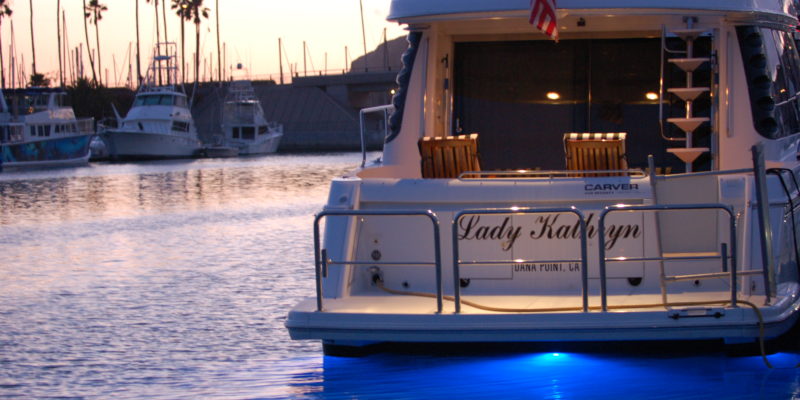The styling of this yacht is supremely unique… While other luxury brands are fighting for curves, the Cantius leaves the pack with it’s modern, edgy and spacious build. Truly a visionary in its class, the 48′ offers a window into the designs of the future- integrated double salons which make the lower sections of her feel like a cathedral of light and space.
We took a look at her in the Dana Point Harbor, covering every inch of both the visible, and under her panels. She’s EXTREMELY mechanic (and surveyor) friendly, with panels giving access to every bit of maintainable equipment. Her engine room allows for every type of upgrade and modification, the IPS 600 engines and pods tucked with a low-profile, giving more than enough working room for techs of all industries. In need of replacing a pod? No problem. Access granted.
The beautiful navigation center/helm offers complete views and unique command of the Cantius and monitoring of the twin diesel engines. Volvo Penta IPS engines with joystick maneuvering are standard, and ensure efficient and responsive handling. You’ll be comfortable in the double helm seat. Standard on her is a two-piece solid windshield featuring double windshield wipers. Both come with a blackout/privacy screen that attaches from the outside to complement the easy pull-down shades throughout the inside of the remainder of the helm area.
She’s ready for entertaining and cruising the California Coast. With a 25 knot cruise and a 35 knot top speed, she’s efficient at full throttle! You don’t find many models that boast her best mileage at WOT.
Her mold hasn’t been changed since her inception- a testament to a great design, with no need for modification. Obviously, we can customize her any way we want, but as far as her build, flawless.
Take a look at her at the Dana Point Harbor! She’s ready for a new Captain.












 The all new 6 Series fits into the original 3 Series housing. Designed with long life in mind, the all new 6 Series is corrosion-proof and features Aqualuma’s injection-moulded, patented polymer housing – the most sophisticated material in underwater lighting available. The 6 Series is fully serviceable and upgradable without the need for haul out.
The all new 6 Series fits into the original 3 Series housing. Designed with long life in mind, the all new 6 Series is corrosion-proof and features Aqualuma’s injection-moulded, patented polymer housing – the most sophisticated material in underwater lighting available. The 6 Series is fully serviceable and upgradable without the need for haul out.



